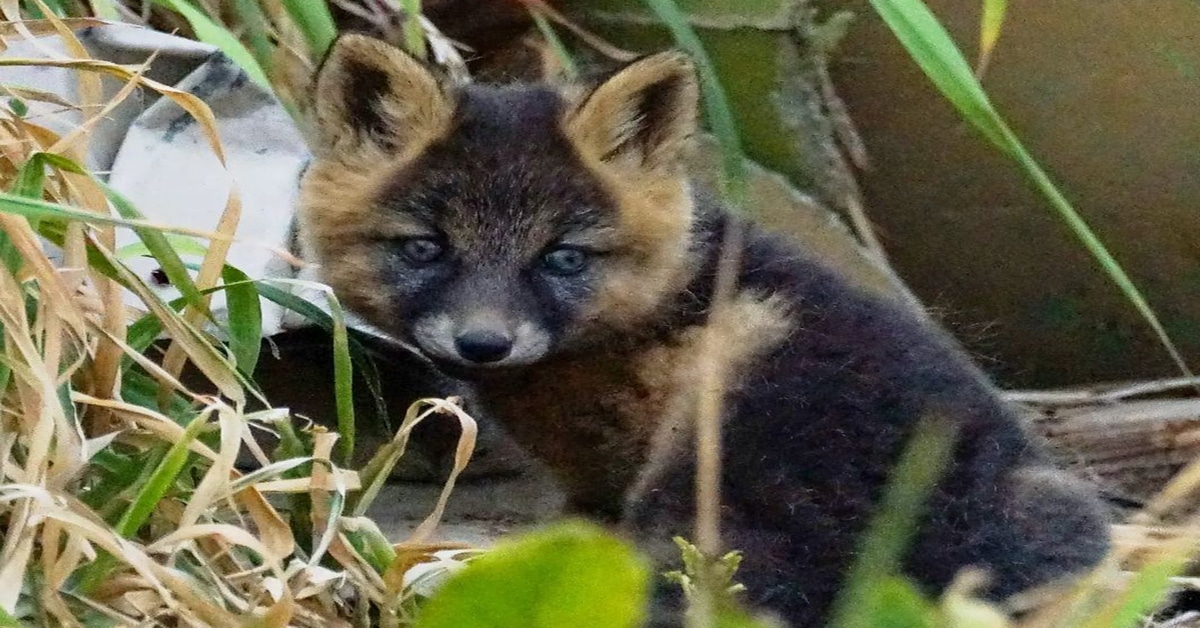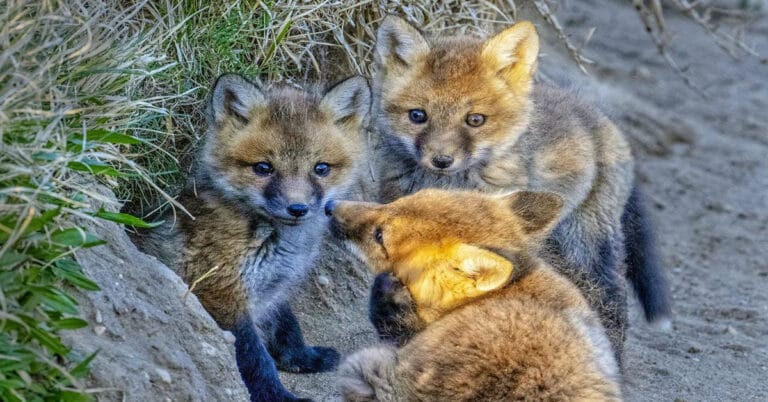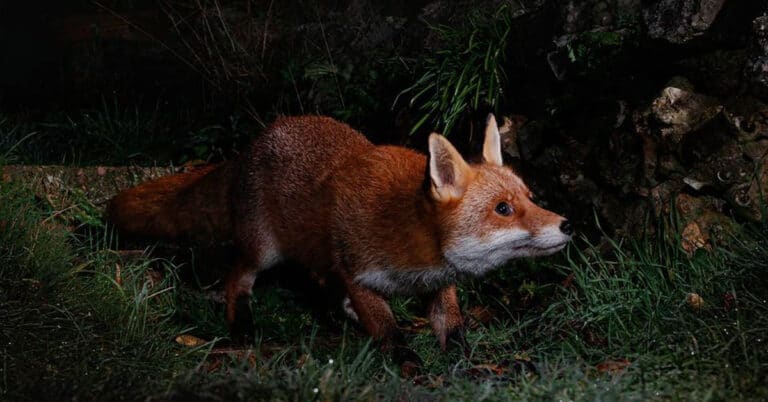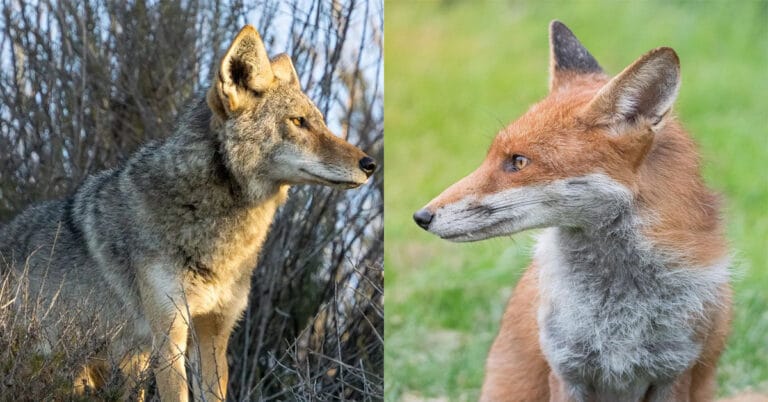What Is A Cross Fox? Characteristics & Interesting Facts You Should Know
Foxes are very interesting creatures, and they can be found in any part of the world. There are 23 different species of them and countless subspecies. As they are different from each other in solar, habits, and behaviors, it is impossible to choose which one is the most special. However, if you have not heard about the cross fox, you may be wondering, what is a cross fox?
To answer the question of what is a cross fox, we will have to discuss its biology, habits, and behavioral characteristics. Let’s discover together one of the most unique fox species.

Biology Of Cross Fox
The scientific name of the cross fox is Vulpes Vulpes. The name has a Latin origin and translates as “the foxiest fox.” After exploring what is a cross fox, it turned out that it belongs to the red fox species that stands out with its melanistic color morph. There are 45 subspecies of red fox in total, and the Cross fox is among those. It has a long black stripe running down its back that intersects another stripe to form a cross over the shoulders.
The cross fox is more prevalent in northern Canada and is less common than the red fox but more common than the much darker gray fox. The cross fox was once thought to be a distinct species from the red fox, with the scientific name Canis decussates.
Long after scientists decided that all red fox color forms were variants of the same species, fur producers and trappers continued to consider them separate. There are three different color variations of cross foxes. Standard, Gold Cross, and Silver Cross. The color is mainly dependent on the genes of the parents.
Natural Habitat of the Cross Fox
It is not easy to say what is a cross fox’s main habitat is. They are quite adaptable and can live in many different environments. Mostly, they enjoy living in the high mountains and forests. However, they are also actively seen in the deserts, cities, suburbs, prairies, and even farms.
Cross foxes are rather prevalent in the northern part of America, accounting for up to 30% of the red fox population in Canada. Before becoming nearly eradicated, cross foxes were common in Idaho and Utah. On the other hand, red foxes are one of the most widespread carnivorous animals on earth. Their conservation status is the least concerning.
What Does A Cross Fox Look Like?
The cross fox is the same size, weight, and height as a typical red fox. They grow about 14 to 20 inches tall and weigh between 5 and 31 pounds. It features a pointed nose, pointed ears, thick, gorgeous fur, and a fluffy tail with white tips. Biologists use this white-tipped tail to distinguish red foxes, especially melanistic ones, from other fox species. They have a small amount of fur under their feet, and this gives them the possibility to walk on the snow and ice.
What is a cross fox color? A band of black fur runs down the cross fox’s back and a similar band runs across its shoulders, forming the diagonal cross. An average fox has a mix of black, orange, brown, and white fur. Each front foot has five claws, and each hind foot has four claws. They have dew claws as well. The reason for Cross Fox’s coloration is melanin. Melanin is responsible for a color mutation that is going on under the skin, and it is responsible for making the skin either darker or lighter.
The cross fox can run at the same pace as a red fox, which is roughly 31 miles per hour. It hunts fast-moving animals like mice and rabbits.
Differences Between Cross Fox And Red Fox
Now you already know what is a cross fox but how does this animal differ from the red fox? The biggest distinction between a cross fox and a red fox is their color. The cross fox gets its name from the black cross on its back. Another difference on the visual side is that this particular species has a bushier tail than the regular red foxes do. In some cases, it may also have a black or silvery mask.
The top body of the red fox is predominantly red, with white fur on the underside, while the flanks and sides of the cross fox’s neck are reddish. What is a cross between a fox and a red fox’s main similarity? Both have golden eyes and black fur on their lower legs and the top of their ears.
What Is A Cross Fox Behavioral Characteristics?
Unlike wolves and African wild dogs, foxes hunt alone. They do live as a pack and only live with others during the mating season. After the babies are born, the mother stays with the young for a few months. Their main living areas and territories are burrows and dens. They mark their living habitat and guard their territory for the rest of their lives. Some dens have been utilized for generations.
Foxes may raise their young in bigger dens, which may include tunnels that link to dens that are used for food storage. If the vacant den is not available, they may dig their own burrows or take over those dug by lesser animals, such as rabbits. Some foxes make their homes in abandoned structures.
It is interesting what is a cross fox communication way. Individual foxes may be distinguished by their sounds, which include up to 28 different vocalizations. Their tails and facial expressions can also be used to communicate.
They have anal sacs, like other canines, and mark their territory with secretions that are extracted from different parts of their bodies, such as paws, lips, and the top of the tail. They also leave scents in their excrement and urine. The fox’s senses are developed equally at the highest levels. They have a remarkable sense of smell, touch, and vision.
Foxes may hunt at any time of day or night, although they prefer to hunt at dusk or night. They slowly stalk their victim and grab it before it can flee. The fox then carries the animal to its cave by the neck to consume it. If the fox is going through heavy foliage, it has a way of holding its victim down. It uses hearing to locate the prey before leaping up and trapping it with its front feet.
Diet Of A Cross Fox
To create a representation of what is a cross fox diet, we have to observe what red foxes eat. They are omnivorous and therefore mainly feed on the same food. Mainly, the cross fox feeds on rodents, insects, reptiles, worms, rabbits, spiders, birds, lizards, and snakes. It will also eat carrots that were left by the bigger animals. If the meat is not available, they have no problem eating the vegetables, fruit, and berries.
Threats For A Cross Fox
Cross foxes have the same predators that regular foxes do. They are even more vulnerable and can not protect themselves. Adult foxes are pretty smart and quick and therefore can avoid predators. However, they are still at risk from coyotes, wolves, bears, large birds of prey, and mountain lions.
The most merciless threat to cross foxes is humans. Humans kill them for their fur and various other reasons. In most cases, the cross is raised and hunted for the fur trade. However, its fur is not as costly as that of the silver fox, another melanistic red fox.
What Is A Cross Fox Life Cycle?
Cross foxes have different mating seasons depending on where they dwell. For those that have their habitat in the north, where it gets relatively cold, their mating season is from February to April. They are mainly monogamous and pair up with one mate. However, females will mate with different males. To attract the males, females communicate by screaming. It is known as the “Vixen Scream” and can be pretty scary to hear.
If you’re wondering what is a cross fox life cycle, you should know that the den is prepared during the gestation period, which lasts up to 53 days. When the time comes for the birth, the female enters the den. Even though the male does not go inside, he brings the food to her. Cross foxes can have up to 13 babies. Babies are born deaf and blind. They start to open their eyes after two weeks, and their hearing sense by that time has diminished. Both parents provide kits with the food.
After babies reach the age of about one month, they start to come out of the den. However, they stay under the adult’s supervision. They start to wander around without supervision when they are two and a half months old. Around the age of 10 months, they are considered adults. It is also interesting. What is a cross fox’s average age? The average cross fox lives from 3 to 6 years. However, in captivity, the life span can be up to 14 years.
Interesting Facts About What Is A Cross Fox
- The female cross fox can mate with multiple males but can only couple up with one.
- The female fox is called a vixen.
- Scientists consider the cross fox to be a separate species from the red fox.
- The cross fox is mainly found in northern Canada.
- When a red fox mates with a silver fox, the result can be a melanistic version of the red fox, and that is the cross fox.
- Red foxes have more color morphs in comparison with cross foxes.
Bottom Line
After a discussion of what is a cross fox, it is clear that they stand out from all other species. Their uniquely unusual color truly makes them awe-inspiring creatures. At one point, scientists even thought that they were separate species. However, it turned out that they were beautiful variations of the red fox. Keep in mind that the cross fox is pretty rare, not because it is endangered, but because it has the rarest coloration.

Nato is a content writer and researcher with a background in psychology who’s eager to explore the wonders of nature. As a travel enthusiast and animal lover, she hopes to inspire others to discover and cherish the beauty and importance of the natural world.







